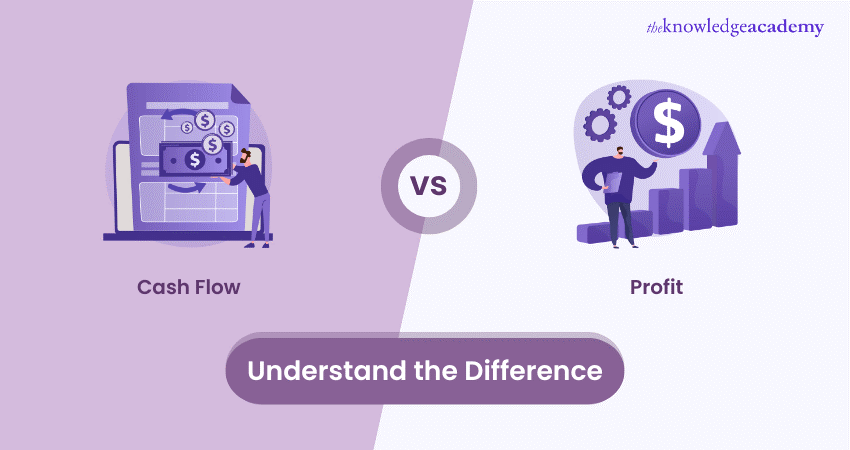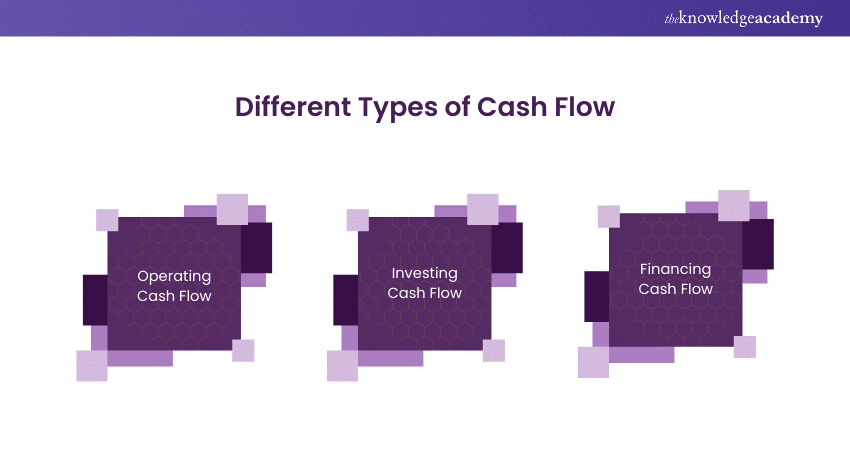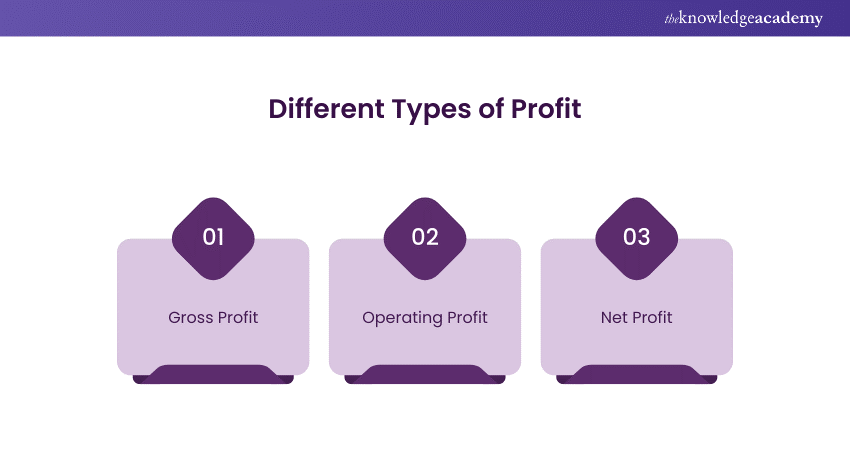We may not have the course you’re looking for. If you enquire or give us a call on +44 1344 203999 and speak to our training experts, we may still be able to help with your training requirements.
We ensure quality, budget-alignment, and timely delivery by our expert instructors.

Have you ever wondered why a Profitable business can still struggle to pay its bills? Understanding the difference between Cash Flow vs Profit is essential for every business owner. While Profit indicates your company’s financial success, Cash Flow reveals how money moves in and out of your business.
By mastering both concepts, you’ll be empowered to make informed decisions, ensuring your business not only survives but thrives. With effective management, you can maintain liquidity, capitalise on growth opportunities, and steer clear of financial pitfalls.
Explore this blog to delve deeper into the differences between Cash Flow vs Profit. Discover how to optimise both for a stronger, more resilient business.
Table of Contents
1) What is Cash Flow?
2) What is Profit?
3) Cash Flow vs Profit: What’s the Difference?
a) Components Included
b) Metrics They Assess
c) Accounting Methods
d) Calculation Process by Companies
e) What They Predict
4) Conclusion
What is Cash Flow?
Cash Flow is the net movement of cash in and out of a business, reflecting its liquidity. It includes cash generated from operations, investments, and financing activities. Positive Cash Flow means the business can cover expenses and invest in growth, while negative Cash Flow may indicate financial challenges.
Different Types of Cash Flow
Understanding the different types of Cash Flow is essential for assessing a company's financial health and liquidity. Each type provides insight into how cash is generated and used within the business.

a) Operating Cash Flow: This is the net cash generated from a company’s core business activities. It reflects the Cash Flow from day-to-day operations, such as sales and payments for supplies. Positive operating Cash Flow is crucial for sustaining business growth, especially in expanding companies.
b) Investing Cash Flow: Investing Cash Flow represents the net cash used or generated from investment-related activities, including the purchase or sale of physical assets like equipment or property and investments in securities. In companies that are actively investing in their growth, this figure is often negative, indicating significant reinvestment in the business.
c) Financing Cash Flow: Financing Cash Flow details how cash moves between the company and its investors, owners, or creditors. It includes the net cash generated from activities like issuing debt, equity, and paying dividends. This Cash Flow type shows how the company funds its operations and growth.
What is Profit?
Profit is the financial gain a company makes when its revenue exceeds expenses. It reflects the business’s ability to generate surplus funds after covering all costs, including operating expenses, taxes, and interest. Profit is important for reinvestment, shareholder returns, and overall financial health.
Different Types of Profit
Understanding the different types of Profit is essential for evaluating a company's financial performance and efficiency. Each Profit type provides unique insights into various aspects of the business's operations and Profitability.

a) Gross Profit: Gross Profit is the revenue remaining after deducting the cost of goods sold (COGS). It accounts for variable costs directly associated with producing goods or services, such as materials and direct labour. Gross Profit does not include fixed costs like rent or salaries of administrative staff. This provides a clear view of production efficiency and Profitability.
b) Operating Profit: Operating Profit represents the Profit earned from a company's core business activities after subtracting operating expenses from gross Profit. It excludes costs and revenues from non-operational sources, such as taxes and interest payments. Also known as Earnings Before Interest and Taxes (EBIT), operating Profit indicates how well a company manages its ongoing business operations.
c) Net Profit: Net Profit is the total income remaining after all expenses have been deducted from total revenue. This includes operating expenses, taxes, and interest payments. It reflects the company's overall Profitability and is a key indicator of financial health. Net Profit shows the actual Profit available to shareholders or for reinvestment into the business.
Transform your career with expert training in Accounting and Financial Statement Analysis Training - Join now!
Cash Flow vs Profit: What’s the Difference?
Accountants frequently use both Cash Flow and Profit in various financial processes. They recognise the significant differences between these terms, which include several key distinctions.
Components Included
Cash Flow represents the actual money flowing into and out of a company over a specific period. It excludes credit balances, amounts owed by debtors, and credit from suppliers, focusing solely on cash transactions. In contrast, Profit is the remaining amount from a company's revenue after deducting costs such as taxes, payroll, and other operating expenses.
Metrics They Assess
Both Cash Flow and Profit are crucial indicators of a company's success and stability. Profit reflects the financial health and long-term sustainability of the business. Meanwhile, Cash Flow is the capital that keeps the business operational. This means that while Profit measures ongoing viability, Cash Flow assesses the company’s ability to meet its immediate financial obligations.
A business can be Profitable yet still face Cash Flow issues. For example, a small electronics manufacturer in the UK might struggle to pay its suppliers due to delayed payments from large clients. This situation can occur even if the company has a Profitable product line.
Accounting Methods
Cash Flow and Profit are tracked using different accounting methods for income and Cash Flow statements. Cash Flow statements can be prepared using the direct or indirect method. The direct method sums all cash payments and receipts, reflecting the company's liquid assets at the start and end of the period.
The indirect method adjusts net income from the income statement by deducting taxes and interest, then adding back non-operating activities. In contrast, Profit is tracked on a Profit and loss statement using either the cash-basis or accrual accounting method.
The cash-basis method records only transactions where payments have been received or made. In contrast, the accrual method accounts for all revenues and expenses, reflecting both current and future financial commitments.
Calculation Process by Companies
To calculate Cash Flow, a company sums up cash from operating, investing, and financing activities and subtracts any cash outflows from these activities. For example, if a florist in London pays £8,000 to a supplier on 13th June, this results in a cash outflow. When the florist receives £12,000 from a customer on 15th June, its net Cash Flow becomes £4,000.
In contrast, Profit is calculated by subtracting direct and indirect costs from total sales revenue. For instance, if a pizza restaurant in Manchester reports quarterly revenue of £20,000 and £13,000 in expenses, its Profit for the quarter would be £7,000.
What They Predict
Cash flow and profit are necessary to analyse the financial trends. however, these are the indicators that show the company’s performance from different perspectives. Cash Flow tracks the flow of money into and out of the organisation in order to help understand liquidity. It assists business to ensure that they have adequate capital to manage arising short term needs.
On the other hand, Profit reflects the company’s sales and expenses, offering a view of overall performance. Analysing profit trends can reveal seasonal fluctuations, helping companies align their objectives with actual performance. This also allows them to prepare effectively for quieter periods.
Enhance your career with our expert-led Accounting Courses – Register now and take control of your financial future!
Conclusion
Cash Flow vs Profit highlights two critical aspects of financial health. Cash Flow measures the actual liquidity available for business operations, ensuring short-term solvency. In contrast, Profit reflects the overall financial performance, indicating long-term sustainability. Effective management involves monitoring both to achieve a balanced and healthy financial strategy.
Boost your Financial Management Skills with our Cash Flow Training - Sign up now to secure your business’s growth!
Frequently Asked Questions
How to Make Cashflow?

To improve Cash Flow, streamline invoicing, manage inventory efficiently, negotiate better payment terms with suppliers, and accelerate receivables. Regularly monitor Cash Flow forecasts and control expenses to ensure a Positive Cash Flow.
Is Negative Cash Flow Good?

Negative Cash Flow is not inherently good; it often indicates financial trouble or investment in growth. However, if it is temporary and part of a strategic investment plan, it can be acceptable. Persistent Negative Cash Flow may signal underlying issues needing attention.
What are the Other Resources and Offers Provided by The Knowledge Academy?

The Knowledge Academy takes global learning to new heights, offering over 3,000 online courses across 490+ locations in 190+ countries. This expansive reach ensures accessibility and convenience for learners worldwide.
Alongside our diverse Online Course Catalogue, encompassing 19 major categories, we go the extra mile by providing a plethora of free educational Online Resources like News updates, Blogs, videos, webinars, and interview questions. Tailoring learning experiences further, professionals can maximise value with customisable Course Bundles of TKA.
What is The Knowledge Pass, and How Does it Work?

The Knowledge Academy’s Knowledge Pass, a prepaid voucher, adds another layer of flexibility, allowing course bookings over a 12-month period. Join us on a journey where education knows no bounds.
What are the Related Courses and Blogs Provided by The Knowledge Academy?

The Knowledge Academy offers various Accounting Courses, including Cash Flow Training, Inventory Accounting and Costing Course and Accounting and Financial Statement Analysis Course. These courses cater to different skill levels, providing comprehensive insights into Corporate Finance.
Our Accounting and Finance Resources cover a range of topics related to Accounting, offering valuable resources, best practices, and industry insights. Whether you are a beginner or looking to advance your Accounting and Finance Skills, The Knowledge Academy's diverse courses and informative blogs have got you covered.
Upcoming Accounting and Finance Resources Batches & Dates
Date
 Cash Flow Training
Cash Flow Training
Fri 21st Mar 2025
Fri 2nd May 2025
Fri 27th Jun 2025
Fri 29th Aug 2025
Fri 3rd Oct 2025
Fri 5th Dec 2025






 Top Rated Course
Top Rated Course



 If you wish to make any changes to your course, please
If you wish to make any changes to your course, please


